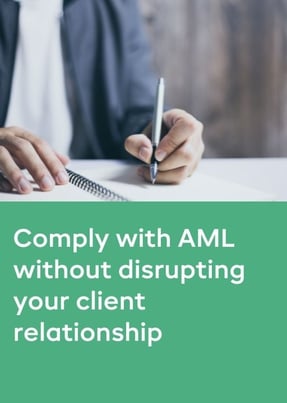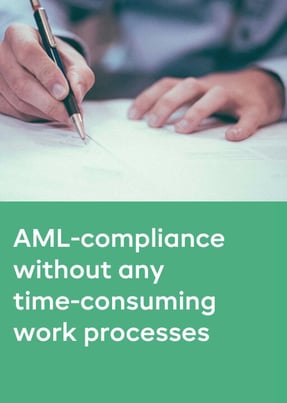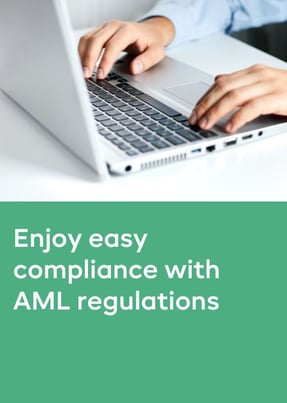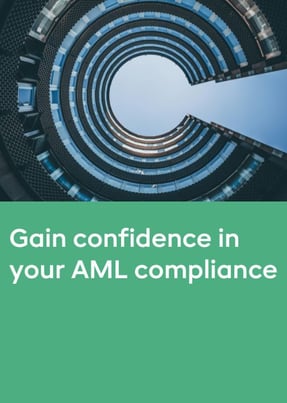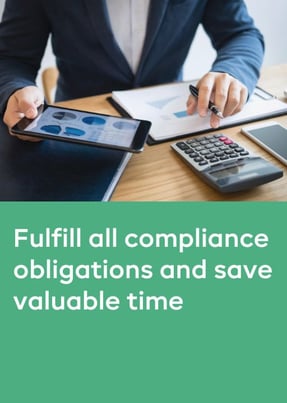- Products
- RegLab for ...
- Knowledge centre
Download the AML glossary >
 Discover the essential AML compliance terminology and gain instant access to a comprehensive guide
Discover the essential AML compliance terminology and gain instant access to a comprehensive guide - The company
Working at RegLab >
Join RegLab as the new Product Owner of our software tool and change the way the legal community approaches anti-money laundering.
There may not be any vacancies that perfectly match your profile, but that does not mean there is no room for someone who can improve RegLab.
- Book a demo
Enhanced or regular client screening?
As a financial or legal service provider, such as a lawyer, investment institution, notary or tax advisor, you must comply with anti-money laundering regulations. This means that you must always conduct customer due diligence. We have noticed that risk classification is considered the most difficult part of this process. When should you conduct enhanced, simplified or regular customer due diligence? We explain this in this article.
How do you determine the risk classification?
Before you start providing services, you investigate your client. That much is certain. But how extensively do you investigate your client? The first step: request information. In this article, you can read exactly what information you need to request: required documents.
Based on the information provided and the internal risk policy, you determine the client's risk profile and, with that, the type of client investigation you will conduct:
- Standard/average risk profile: regular client investigation
- Low risk profile: simplified client investigation
- High risk profile: enhanced client investigation
Please note: You conduct the client investigation before starting your services and record the client data after verifying it.
When should you opt for a regular client investigation?
This type of due diligence is the starting point. You verify your customer's identity and record it. Is it a legal entity? Then you also determine the UBO: the ultimate beneficial owner with more than 25 per cent of the shares or voting rights.
You record the purpose of the business relationship and check whether there are any signs that require further investigation. In some cases, you also look at the source of funds used in the business relationship or transaction.
Is the customer represented by someone else? Then you also record that person's identity. When everything is in place, you complete the investigation.
When is an enhanced client investigation required?
Enhanced due diligence is required when there is a high risk of money laundering or terrorist financing, or when such activity is suspected. For example, when a customer is a politically exposed person (PEP). Or when there are complex or unusually large transactions without a clear economic or legitimate purpose.
You should also opt for enhanced due diligence if a client is based in a country designated as a risk country by the European Commission. The European directives also specify additional risk factors, such as the nature of the transaction or the supply channel used.
An enhanced investigation means that you take a closer look at your client's background and reputation. For example, you investigate the source of funds involved in a transaction. You record everything so that you can be sure that you are not working with parties that pose a high risk.
When is a simplified client investigation sufficient?
In low-risk situations, simplified customer due diligence may be sufficient. This applies, for example, to listed companies where the UBO is already known, or to governments and government institutions. You must always assess whether this is justified, because even with simplified due diligence, you must have sufficient information to be able to assess the risk.
What do you write down for each type of research? Case studies
Whichever type of customer due diligence you use, you must always record why it is suitable. A brief explanation is enough, as long as it clearly shows that you have made the right decision. Here are a few examples:
- Simplified investigation
‘’Client is wholly owned subsidiary of a US listed company. The stock exchange is SEC regulated. Therefore, no UBO is raised and a simplified examination is appropriate.‘’ - Regular investigation
‘’There is no reason to conduct simplified/strengthened investigations.‘’ - Enhanced investigation
‘’Client is located in a high-risk country and has an international structure. The reason for building the complex shareholder structure is known and plausible. A heightened investigation is therefore deemed appropriate.‘’
Themed file: fully prepared for the supervisor’s audit
This article is part of a number of articles and downloads that will help you prepare yourself for the supervisor’s visit. Do you want to be 100% AML-proof and ready for the supervisor’s visit? Find all FAQs in our Knowledge Centre.
Knowledge centre
Download the assessment: "Risk assessment: a tool."
Easily assess your client's risk level with the help of this document.
